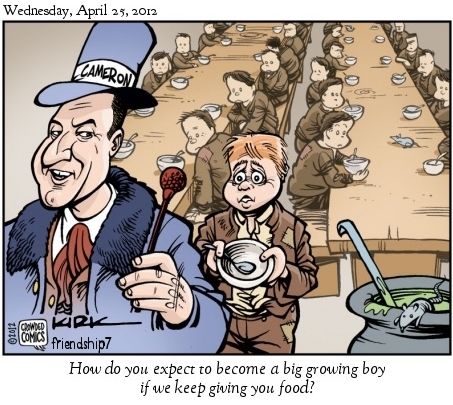There have appeared in this space several thought-provoking attempts to define capitalism, including here (see http://www.dailykos.com/story/… and here (see: http://www.dailykos.com/story/… Although this might seem to some a mere academic exercise, nothing could be further from the truth: to be effective, activism to change, transform or overthrow any human construction must be rooted in a thorough and accurate understanding thereof.
This is especially important when discussing capitalism, both because its pervasive ubiquity creates a familiarity that masquerades as understanding and because the defenders of the system work tirelessly to spew lies about its virtues. Even more treacherous than the increasingly strained defenses of the system by modern conservatives are the ideological productions of modern liberals who claim a desire to reform capitalism or ameliorate those of its consequences they don’t like.
The key problem is that liberals and conservatives share the same basic understanding of capitalism, which is rooted in the neo-classical revolution in mainstream economics that occurred in the late 19th century. On this view, capitalism is a “natural” system arising from and based on market exchanges between buyers and sellers of commodities, which are assumed to maximize “efficiency” (defined in terms of allowing “supply” and “demand” to set market-clearing prices) and human happiness (defined as the total dollar value of market commodities bought and sold (GDP), regardless of what needs they meet or how they are distributed among the population).
Thus the neo-classical view (like the classical political economy of Adam Smith and David Ricardo that preceded it) is fundamentally ahistorical: capitalism is understood not as a historically specific constellation of economic relations, but rather as the result of encouraging the supposedly natural human tendency to engage in market transactions on a competitive basis with the goal of maximizing profit.
Even worse, the neo-classical assumption that the “market” is a naturally occurring phenomenon forces it to posit an Ideal Type Market-characterized by virtually unrestrained good-faith buying and selling backed up by rules to enforce the terms of transactions-against which historical social formations are measured by the degree to which they approximate the Ideal Type and can be called “capitalistic.” In this view there is of course no room for understanding how the historical economies of pre-capitalist social formations worked on their own terms, because those terms are assumed ab initio to represent flaws, deviations from the Ideal Type that maximizes happiness.
And therein lies the reason that neo-classical economics provides an unstable intellectual foundation for capitalist reformism that unavoidably undermines any case for change, because all such reforms involve straying from the Ideal Type Market. That is why, in televised “debates” about regulation between conservatives and liberals, when the former extol the virtues of the market and call for “non-interference,” the latter start off the same way (Obama does this all the time) and then suddenly pivot to an argument that some specific reform represents an exception to the free market rule. Conservatives thus always come off as more intellectually consistent while liberals seem (and in fact are) intellectually muddled and confused-even when “the facts” seem to stand in their favor.
We, however, are Anti-capitalists, and we need an understanding of capitalism that historicizes it as a system with a definite beginning and, therefore, a possible end.

